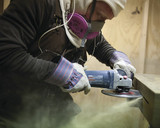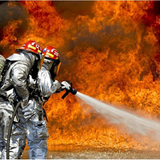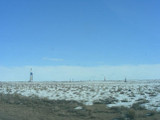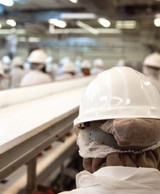Blog
How Do the New OSHA Crystalline Silica Rules Affect Construction Companies?
Crystalline silica is a common mineral that is found in materials that construction workers deal with every day – such as roads, buildings, and sidewalks. It is a common component of sand, stone, rock, concrete, brick, block and mortar. Common workplace operations involving cutting, sawing, drilling, and crushing of these materials often create crystalline silica dust exposure in construction. Scientific evidence shows that current exposure limits do not adequately protect worker health. The
…
Sep 22nd 2017
All You Need to Know About The Walking-Working Surfaces And Personal Fall Protection Systems Final Rule
The purpose of the OSHA’s final rule is to revise the outdated general industry Walking-Working Surfaces and Personal Protective Equipment (Fall Protection Systems) Standards on the slip, trip, and fall hazards, which are a leading cause of worker injuries and deaths. The Walking-Working Surfaces; Personal Protective Equipment (Fall Protection Systems) Standard, 29 CFR 1910.22, became effective January 17, 2017. The final rule covers general industries (building management services, utilities
…
Jul 18th 2017
Top 5 Tips on How to Avoid OSHA HCS Violation Penalties
The OSHA Hazard Communications Standard (HCS) 1910.1200 is important because it prevents over 500 workplace injuries and about 43 deaths across the USA annually. Revised in 2012, it covers 43 million workers engaged in handling hazardous materials at work. The Standard mandates the identification of about 650,000 hazardous chemicals and enforces the appropriate protective measures.
As a Safety Manager at a facility that handles hazardous materials (even part time or on rare occasion), there
…
Jun 15th 2017
How to Easily Prevent Catastrophic Dust Explosions
Effective September 2015, the NFPA 652 Standard outlines the requirements for controlling combustible dust hazards. The Standard specifies guidelines on dust combustibility and emphasizes the importance of fire protection and explosion prevention. It states that within three years, starting from October 2015, a Dust Hazard Analysis (DHA) must be performed by all enterprises that generate combustible dusts. It is also good to know the difference between NFPA 652 and NFPA 654 standards: the fir
…
May 11th 2017
Over Complicating Safety
By Brian Mitchell, HSE officer, and drilling consultant
The rig count is climbing once again, and completions activity is increasing. Personnel who have been out of the business for a period of time and new hires are being put to work. With that, many are expressing concerns about restarting effective safety programs and avoiding serious injuries that come with the early stages of a boom.
In 2006 Patterson-UTI had 5 fatalities in 6 days. They did a company-wide safety st
…
Mar 11th 2017
ANSI Compliance, Safety and Health for Food Processing
By Samantha Hoch, Marketing, Haws Corp.
From the oil industry to mining, agriculture to research, any working environment that puts employees in close proximity to occupational hazards, such as potentially harmful chemicals, must make workplace safety a priority. The food processing, meatpacking, and poultry processing industries are no exception.
Industry Risks
In addition to physical hazards like high noise levels, cuts, and musculoskeletal disorders, exposure to substances like ammonia,
…
Feb 27th 2017
How Lower Gas Prices Influence Occupational Safety in Oil and Gas Industry
According to the
U.S. Energy Information Administration (EIA), the average retail price of regular gasoline in the US was $2.24/gallon on August 29, 2016, (the lowest price on Monday before Labor Day since 2004). In spite of the fact that gasoline consumption has been robust in such countries as India, China, and the U.S.A., growth in supply has been steadily outpacing consumption starting from 2015.
Refineries have the ability to adjust petroleum product yields by improving pro
…
Jan 9th 2017
4 Great Reasons to Get Your Petzl Gear at PK Safety
Reason #1: Petzl gear is a highly respected brand in the climbing industry for quality and reliability. It will keep you alive, and it's 25% off at PK Safety. Petzl equipment has been thoroughly tested, re-tested, and meets the relevant certifications as well as the approval of rope access experts around the world. That is two things in our first reason, but how can you afford to buy anything less than the best for your dangerous work and climbing?
Reason #2: Free shipping. If your order is
…
Sep 19th 2016
OSHA Update: Fine Increases in 2016
For the first time in 25 years, OSHA will be increasing its penalties. This change is a catch-up adjustment since it has been so many years since the organization has increased fines. Violation fees are expected to go into effect by August 1, 2016.
2016 penalty increases include:
Violation Type
Current Maximum Penalty
2016 Maximum Penalty*
Other than Serious Violations
$7,000
$12,600
Serious Violation
$7,000
…
Apr 19th 2016










